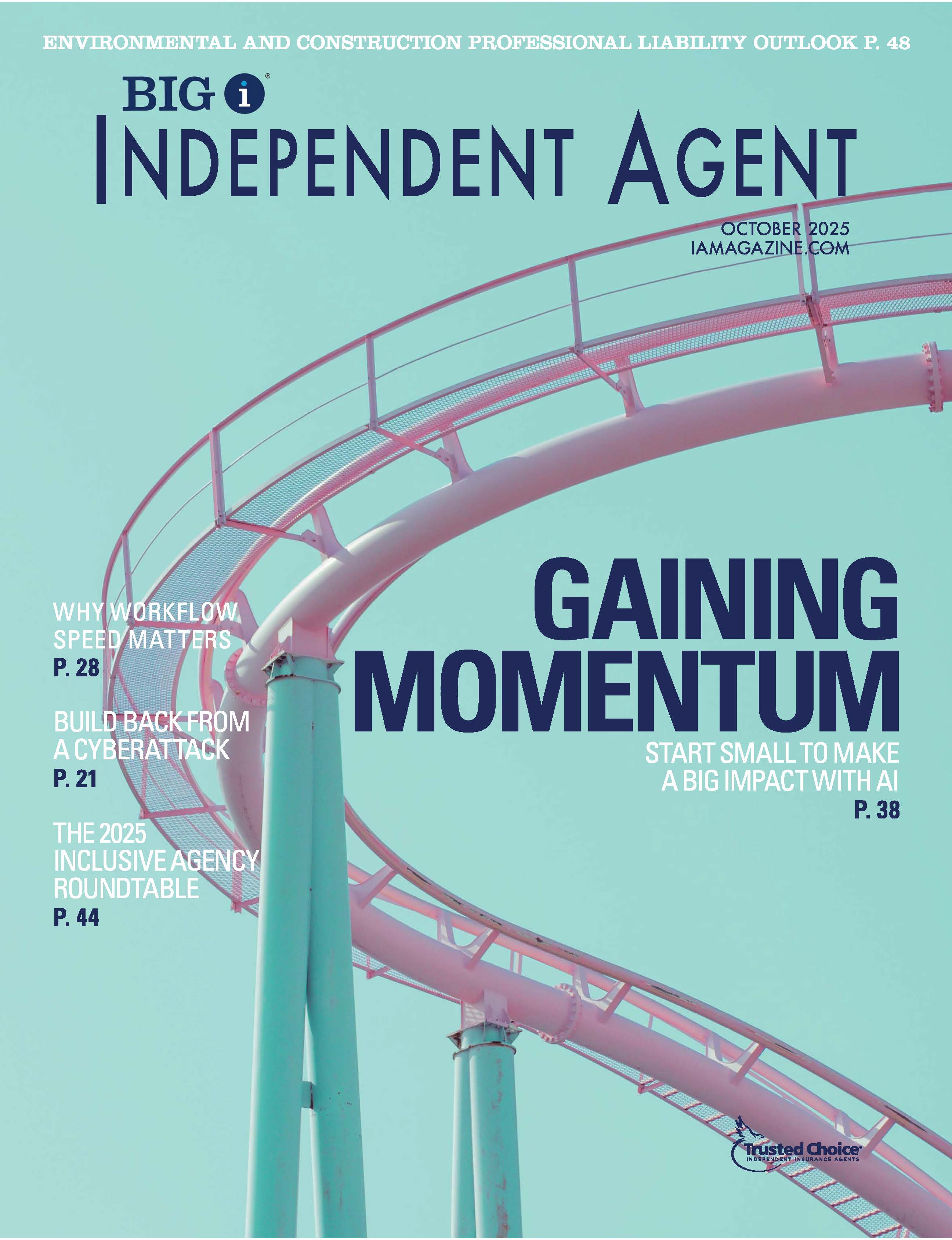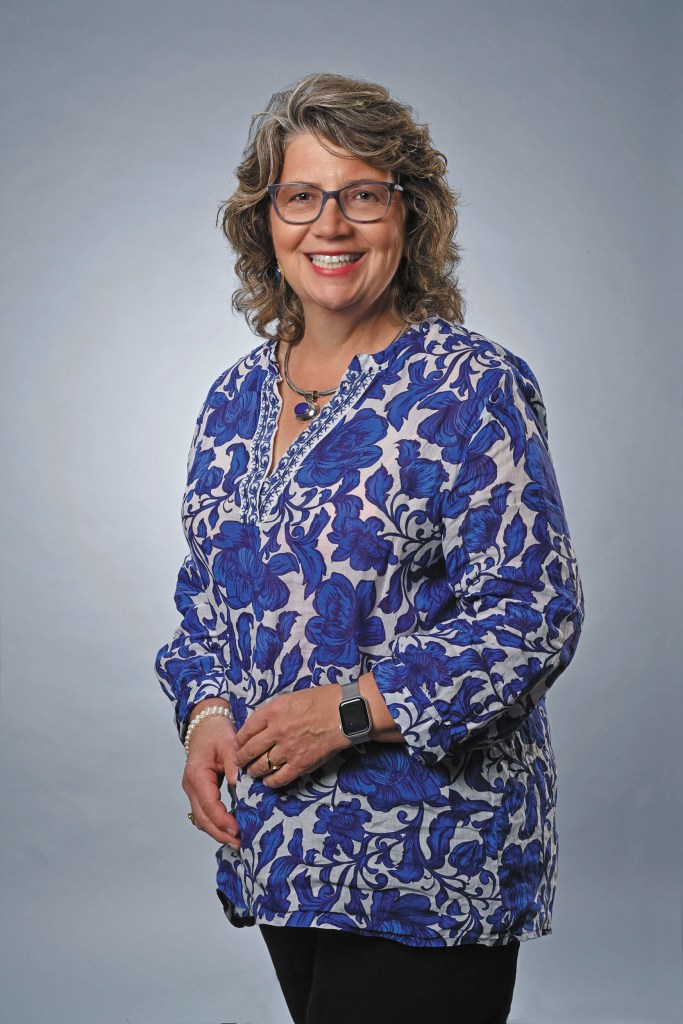Tools of Engagement: Using Social Media for Marketing

By: Margie Monin Dombrowski
You’re probably active on myriad social media platforms in your personal life: Facebook, Twitter, LinkedIn and maybe even newer apps like Instagram and Snapchat. Chances are, you use these tools to keep in touch with your friends and family and stay looped in to current events and popular culture.
But can you say the same for your agency?
“From the customer perspective, the insurance industry has largely been perceived as faceless, distant and impersonal, and only concerned with numbers and profits,” says Charles Wasilewski, senior vice president of marketing firm Aartrijk. “Social media puts a friendly face on the insurance agent as somebody who cares. It’s bringing personality and authenticity to the industry.”
Developing an impactful social media marketing plan means engaging your audience, sharing informative content and marketing to your audience at the right place and time.
“Social media has changed a lot within the last five years,” says Michelle O’Connor, owner of ISU O’Connor Insurance Associates, Inc. in Charlotte, North Carolina. “Insurance may not be as sexy as other industries such as fashion, but we’re unique in how difficult it can be to start a conversation. It’s our goal to create conversations and engage, and we try to make it personal so people can learn about us and who we are. This is one of our branding initiatives: to tell our story.”
Facebook: Share Your Story
An agency’s Facebook page, according to Wasilewski, should show off its enthusiasm for its customers, the insurance industry and the local community.
“It’s about being a part of the community and sharing photos and videos of an agency in action, in their communities doing volunteer work, helping customers and sharing local knowledge,” Wasilewski says. “If you specialize in upscale homeowners coverages, why not show a beautiful kitchen remodel project in a photo and give a shout-out to the contractor who did the work? Not only are you highlighting a customer’s home, but also the local contractor.”
O’Connor says her agency, which outsources most of its social media marketing, uses Facebook to inform clients that the agency plans to attend an upcoming community event, or when it’s doing a promotion. Then, the agency uses the platform to thank the community for its support.
In one instance, O’Connor Insurance Associates announced it would donate to the local food pantry and send referrers a thank-you note and gift card for every business referral. “We wanted to pay it forward in our community when people were kind to us, so we donated two meals for every referral and then announced how many meals we donated at the end of the promotion,” O’Connor explains.
An in-house marketing department manages social media at Jasper, Indiana-based German American Insurance, which uses Facebook to create brand awareness and manage its reputation.
“It’s an outlet for our customers to engage with us,” says Jane Balsmeyer, vice president/director of marketing at German American Bancorp. In one recent contest, for example, German American asked fans to comment on what they liked about the agency in order to win a Fitbit.
“A lot of our branding story is about helping communities thrive and prosper,” Balsmeyer explains. “The communities that are physically, financially and emotionally fit are far more prosperous communities, so we tied our brand to physical and financial fitness. It got a phenomenal amount of comments and likes and was very successful. It also gave people the opportunity to express what they thought about the German American brand.”
“If somebody likes or shares a post, it could be seen by potential customers,” agrees Christopher Graham, vice president and partner at Shepard Walton King Insurance Group in McAllen, Texas. “When it gets shared by multiple people, it’s not just your customer base seeing it—it’s all their friends and their friends’ friends.”
At Shepard Walton King, all partners participate in charitable activities for their organizations of choice, which includes raising money for scholarships and donations through local events like a crawfish boil, an Oktoberfest and a golf tournament.
“We promote these events on our Facebook page to make our customers aware that we’re socially conscious and we take care of the organizations that are important to us,” Graham says. “Facebook is another form of vetting, so a new customer can go to our page, read our posts and learn all about us. I think that gives them a positive feeling about who we are in the community.”
LinkedIn: Educate and Inform
If your agency writes any commercial lines at all, you need to be on LinkedIn “sharing thought leadership,” says Wasilewski, who suggests posting research papers and interesting facts about the industries you insure. For example, “if one of your specialties is contractors, you can set up a county-wide or state-wide contractors’ group and then share information on issues related to contractors, such as safety, building code changes or the latest in regulation in their space,” he says.
Like many other agencies who use LinkedIn to be a resource to others, O’Connor Insurance Associates is strategic about the information it posts to its company page. For example, because the agency targets contractors, it often shares information it feels would be particularly useful for business owners in order to spark relevant conversation. “Our mission is to educate people, so we use it as an educational tool and not for soliciting,” O’Connor says.
For Berends Hendricks Stuit Insurance Agency in Grandville, Michigan, the goal on LinkedIn is to create brand awareness primarily by supplying information to other businesses that are clients or potential clients. “We have different types of audiences and we want to speak to them in the best way we can,” says Traci Poortenga, marketing specialist. “We use Facebook more for personal interaction and LinkedIn for the business side. We follow our clients and different businesses, and we get excited about what they’re doing and sharing.”
Connecting with others and seeing who their clients are connected to can also be a way to learn about another company or individual before a business meeting, O’Connor has found. Her agency also joins relevant LinkedIn groups to engage in discussions and share information with others.
“We’ve joined a lot of local business and networking groups or national insurance agent groups so we can stay active and keep our finger on what’s going on in our community with business owners,” O’Connor says. That way, the agency can chime in with an expert answer when someone poses a question to the group online. “The whole idea is to be a resource. It’s not just about insurance for us; it’s about what we can share with our business owner friends to help them grow.”
Twitter: Enhance Your Brand
If you can learn hashtag lingo and squeeze engaging copy into 140 characters or less, Twitter can be a useful tool for raising brand awareness and driving website traffic by sharing links to informative blog posts and content.
“We use Twitter as another avenue or tactic to push out the same things we’re doing on Facebook, but just in a Twitter language,” Poortenga says. “It’s about sharing links and what’s popular in the hashtag world, because that’s a large part of how people search. If we’re doing something in the community or celebrating someone’s success, we’ll put that on Twitter, too.”
Balance is important on this platform—you don’t want to bombard followers with too much of your own content. That’s why Andrew Davis of Tippingpoint Labs and Joe Pulizzi of Content Marketing Institute came up with the “4-1-1” rule for Twitter: For every self-promoting tweet, you should also link to four other pieces of content and publish one relevant retweet from other sources.
“Insurance agencies who are good at Twitter do a lot of sharing and retweeting, but it’s original and not promotional,” Wasilewski explains. “It might link to something on their agency website, but it’s educational and not just a vanity piece.”
Twitter link sharing might include research reports, catastrophe preparedness tips and legislation changes—anything that might be valuable for your audience. “It could be something as simple as an insurance carrier has a toll-free number set up for a particular disaster,” Wasilewski says. “That’s one way of sharing information to take care of your community.”
Margie Monin Dombrowski is an IA contributor.
Blogging: Content is KingInsurance agencies are also getting into publishing their own blog content—not only is this an effective social media strategy and educational tool, you can also share links to this content on all your other social media platforms if you’re strategic about it. “Every agency should have a blog,” says Aartrijk, who’s heard plenty of excuses about why some agencies aren’t blogging, from lack of time to lack of content ideas. “Every hour of every day, a producer or principal or CSR is saying something to a customer that would be a wonderful blog post. It’s just sharing advice—some agencies might say none of their agents are writers, but many of them are talkers, so create a video blog where you’re walking them through the ‘10 Risk Management Steps for Insuring a Building’ or ‘Six Ways to Save on Car Insurance.’” Relevant blog post ideas can vary depending on the lines of insurance an agency offers, which gives you plenty of topics to choose from. “It could be anything from being prepared for hurricane season to getting your college kid the proper coverage for when he’s away at college,” says Graham, whose firm hired an outside marketing agency to run its social media and blogging. The agency’s blog content is always relevant and drives even more traffic to the agency’s website via Facebook links. “A lot of what’s posted on Facebook could be the hot topic of the month, and is used to drive clicks to our website,” Graham explains. Creating a content schedule and planning content in advance are important steps in making sure your blogging efforts stay timely and consistent. “Google likes when you’re consistent with publishing blog posts and you don’t have to blog every day or every week,” Aartrijk says. “Blog every other week or once a month, but keep to a schedule.” For example, Poortenga says Berends Hendricks Stuit usually posts a blog every Tuesday and Thursday, rotating topics between wellness, commercial, safety, financial, personal lines, health care reform, employee benefits and HR. “We want to make sure our clients know what’s going on within the industry, or we blog about what would be helpful to them in their everyday lives or the everyday running of their business,” Poortenga explains. “We research a lot of what’s being talked about within insurance industry and what our agents are hearing when they’re talking to clients and potential clients.” There’s no one-size-fits-all secret to success, but staying tuned in to the social world is a good place to start. “You want to have your fingers on it, otherwise it’s not personal,” O’Connor says. For example, O’Connor notes that the firm her agency previously used for outsourcing social media work failed to successfully engage followers. “Now that we hired another agency, our posts are reflective of what’s going on within our agency and the questions we’re getting,” she explains. “Our policy has been to never ask directly for sales so people can rely on us as a good source of information. We also sprinkle in personal information so they know we’re a real organization with real people.” —M.M.D. |










